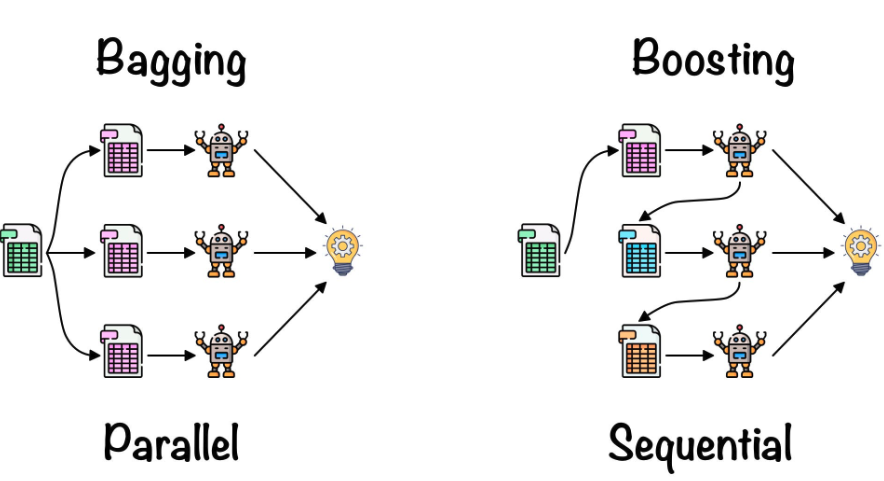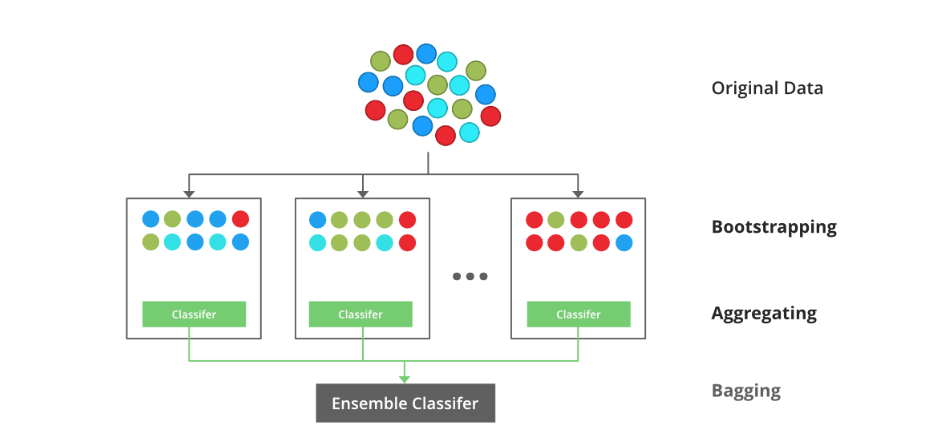Bagging vs Boosting in Machine Learning

Ensemble learning helps improve machine learning results by combining several models. This approach allows the production of better predictive performance compared to a single model. Basic idea is to learn a set of classifiers (experts) and to allow them to vote. Bagging and Boosting are two types of Ensemble Learning. These two decrease the variance of a single estimate as they combine several estimates from different models. So the result may be a model with higher stability. Let’s understand these two terms in a glimpse.
Bagging: It is a homogeneous weak learners’ model that learns from each other independently in parallel and combines them for determining the model average.
Boosting: It is also a homogeneous weak learners’ model but works differently from Bagging. In this model, learners learn sequentially and adaptively to improve model predictions of a learning algorithm.
Let’s look at both of them in detail and understand the Difference between Bagging and Boosting.
Bagging
Bagging attempts to tackle the over-fitting issue
Implementation Steps of Bagging
Step 1: Multiple subsets are created from the original data set with equal tuples, selecting observations with replacement.
Step 2: A base model is created on each of these subsets.
Step 3: Each model is learned in parallel with each training set and independent of each other.
Step 4: The final predictions are determined by combining the predictions from all the models.

The Random Forest model uses Bagging, where decision tree models with higher variance are present. It makes random feature selection to grow trees. Several random trees make a Random Forest.
Boosting
Boosting tries to reduce bias. Boosting is an ensemble modeling technique that attempts to build a strong classifier from the number of weak classifiers. It is done by building a model by using weak models in series. Firstly, a model is built from the training data. Then the second model is built which tries to correct the errors present in the first model. This procedure is continued and models are added until either the complete training data set is predicted correctly or the maximum number of models is added.
Implementation Steps of Boosting
Step 1: Initialise the dataset and assign equal weight to each of the data point.
Step 2: Provide this as input to the model and identify the wrongly classified data points.
Step 3: Increase the weight of the wrongly classified data points and decrease the weights of correctly classified data points. And then normalize the weights of all data points.
Step 4: if (got required results) Goto step 5 else Goto step 2
Step 5: End

Differences Between Bagging and Boosting
